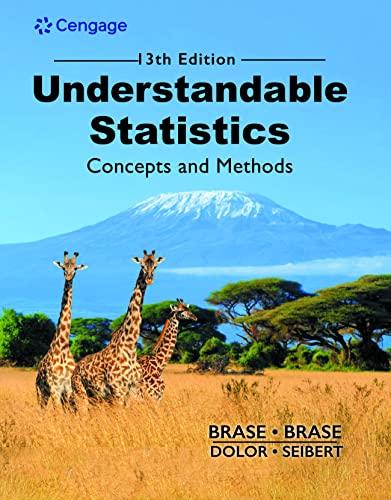Critical Thinking: Interpreting Computer Printouts We use the form y 5a 1bx for the least-squares line. In
Question:
Critical Thinking: Interpreting Computer Printouts We use the form yˆ 5a 1bx for the least-squares line.
In some computer printouts, the least-squares equation is not given directly. Instead, the value of the constant a is given, and the coefficient b of the explanatory or predictor variable is displayed. Sometimes a is referred to as the constant, and sometimes as the intercept. Data from Climatology Report No. 77-3 of the Department of Atmospheric Science, Colorado State University, showed the following relationship between elevation
(in thousands of feet) and average number of frost-free days per year in Colorado locations.
A Minitab printout provides.
Predictor Coef SE Coef T P Constant 318.16 28.31 11.24 0.002 Elevation -30.878 3.511 -8.79 0.003 s = 11.8603 R-Sq = 96.3%.
Notice that “Elevation” is listed under “Predictor.” This means that elevation is the explanatory variable x. Its coefficient is the slope
b. “Constant” refers to a in the equation yˆ 5a 1bx.
(a) Use the printout to write the least-squares equation.
(b) For each 1000-foot increase in elevation, how many fewer frost-free days are predicted?
(c) The printout gives the value of the coefficient of determination r2. What is the value of r? Be sure to give the correct sign for r based on the sign of b.
(d) Interpretation What percentage of the variation in y can be explained by the corresponding variation in x and the least-squares line? What percentage is unexplained?AppendixLO1
Step by Step Answer:

Understandable Statistics Concepts And Methods
ISBN: 9780357719176
13th Edition
Authors: Charles Henry Brase, Corrinne Pellillo Brase





